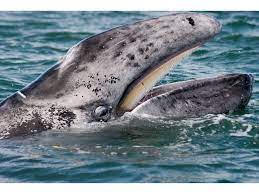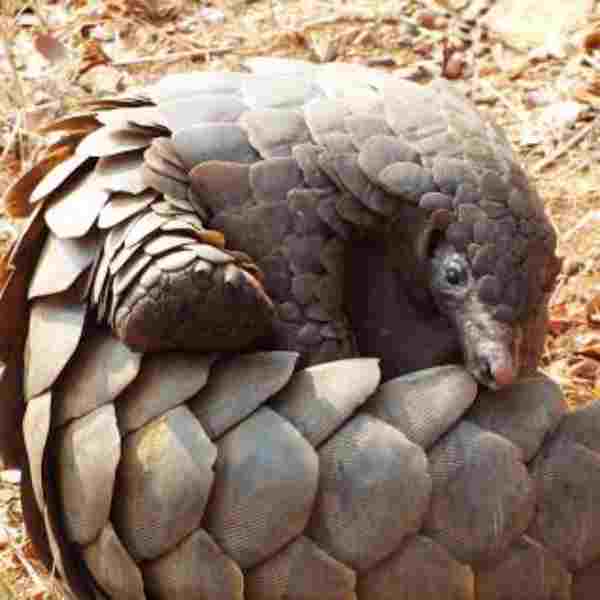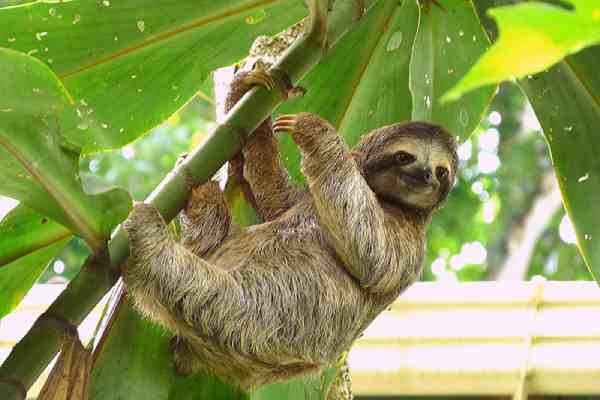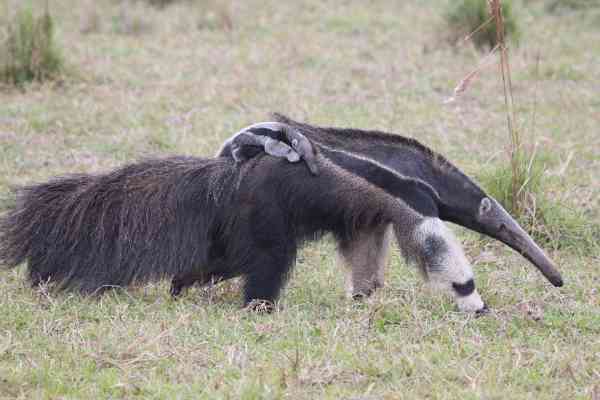Teeth are often considered synonymous with the animal kingdom, yet nature never ceases to amaze with its diversity. Enter the intriguing realm of animals that do not have teeth, a fascinating group that has evolved unique adaptations for survival. While some might associate toothlessness with vulnerability, these creatures have developed specialized mechanisms to thrive and conquer their ecosystems.
Table of Contents
From gentle giants filtering food from the depths of the ocean to agile insect hunters employing alternative strategies, this article delves into the diverse and unexpected ways these toothless wonders procure their meals and navigate their environments. Join us as we unravel the mysteries of these remarkable creatures, shedding light on their evolutionary paths and the exceptional adaptations that make them truly extraordinary in the animal kingdom.
Animals Without Teeth: Overview and Classification:
Animals without teeth, or edentulous creatures, encompass a surprisingly diverse group found across various classes and phyla in the animal kingdom. The absence of teeth can be attributed to their specialized diets or distinct evolutionary adaptations.
Firstly, we have vertebrates like birds (Aves) and baleen whales (Mysticeti), which have evolved alternatives to teeth. Birds have beaks adapted to their specific feeding habits, ranging from the sharp, hooked beaks of raptors to the probing beaks of hummingbirds.
On the other hand, baleen whales utilize baleen plates to filter small prey, such as plankton and krill, from the water. Additionally, anteaters (Xenarthra) and pangolins (Pholidota) are edentulous mammals relying on long, sticky tongues and strong stomach muscles to consume ants, termites, and ants’ eggs.
Invertebrates like insects and arachnids also exhibit diverse feeding adaptations, including mandibles, proboscises, and specialized mouthparts, allowing them to extract nutrients from their environments without traditional teeth.
Baleen Whales (Mysticeti):

Baleen whales, like the magnificent blue whale and acrobatic humpback whale, lack conventional teeth. Instead, they possess baleen plates hanging from their upper jaws, made of keratin, a protein similar to human hair or nails.
These plates act as a filter, allowing baleen whales to sieve enormous amounts of water, trapping tiny prey such as krill and plankton, which constitute their primary food source. The adaptation of baleen allows them to efficiently feed while minimizing the intake of seawater. Baleen whales are majestic marine giants, showcasing nature’s innovative solutions for feeding in the ocean’s vast and dynamic environment.
Anteaters:

Anteaters, epitomized by the giant anteater, have evolved without teeth to accommodate their specialized diet of ants and termites. Their long snouts and tongues, often longer than their bodies, are their primary tools for consumption.
Anteaters use powerful claws to tear open insect nests, and then, with their sticky tongues, they extract thousands of ants or termites from the crevices. Their dietary adaptation showcases nature’s ingenuity in creating highly efficient feeding mechanisms, allowing these creatures to thrive in their habitat. Anteaters play a vital role in controlling insect populations, emphasizing the importance of such specialized adaptations in the ecological balance.
Pangolins:

Pangolins, unique and endangered creatures, are devoid of teeth, relying on their remarkable adaptations to consume ants, termites, and larvae. Their long, muscular tongue covered in sticky saliva is their primary feeding tool. Pangolins use their strong claws to tear into insect mounds and tunnels, and then they extend their tongues into these crevices to retrieve their prey.
Their diet predominantly comprises soft-bodied insects, showcasing their specialized adaptations for extracting and consuming their food. Pangolins are a critical component of their ecosystems, highlighting the significance of specialized feeding mechanisms in the survival and balance of diverse species.
Birds:

Birds, a diverse class of animals, are generally characterized by their beaks, as most lack traditional teeth. Their beaks come in an array of shapes and sizes, each adapted to their specific diet and feeding behavior. Beaks allow birds to perform various tasks, from cracking seeds and nuts, probing for insects, tearing flesh, and even sifting through mud or water for prey.
This diversity in beak morphology emphasizes the versatility and adaptability of birds, enabling them to exploit a wide range of ecological niches and food sources. From the hooked beak of an eagle to the long, slender beak of a hummingbird, avian beaks exemplify nature’s precision in design to cater to distinct dietary needs.
Sloths:

Sloths, known for their slow and deliberate movements, possess unique dental adaptations that set them apart in the animal kingdom. While they do have teeth, they are highly specialized and peg-like, particularly in the front of their jaws. These teeth lack enamel, and their structure is adapted to grind down the tough leaves that constitute the majority of their diet.
Sloths rely on their powerful jaw muscles to chew and break down plant material efficiently. Their dental adaptations showcase an evolutionary response to their specific dietary requirements and emphasize their remarkable ability to extract nutrients from their fibrous plant-based diet. The specialized dental structure of sloths is a fascinating example of how animals evolve to thrive in their environments, despite seemingly unconventional or limited adaptations.
Turtles:

Turtles, both aquatic and terrestrial, possess beak-like jaws instead of traditional teeth. Their jaws are adapted to their specific diets, with various shapes and structures that aid in capturing and consuming their preferred foods.
Aquatic turtles often have sharp-edged beaks suited for catching fish, insects, and crustaceans. In contrast, herbivorous turtles have broad and flat beaks, ideal for cutting and crushing vegetation. The beak’s design is essential for handling diverse foods efficiently, showcasing the evolutionary specialization to different dietary needs. Turtles have successfully adapted to their environments through these specialized beaks, underlining the incredible diversity of feeding adaptations within the world of reptiles.
Gastrointestinal Parasites:

Gastrointestinal parasites, such as tapeworms and flukes, are internal organisms that lack teeth or any conventional feeding structures. Instead, they possess specialized adaptations to attach themselves to their host’s intestines or organs.
These adaptations include hooks, suckers, or specialized mouthparts that allow them to anchor securely to the host’s tissues. Once attached, these parasites absorb nutrients directly through their body surface from the host’s digestive system. While lacking teeth, their unique adaptations enable them to survive and thrive within their hosts, emphasizing the intricacies of coexistence and adaptation in the complex world of parasitism.
Evolutionary and Environmental Adaptations:
The evolution of toothlessness is an extraordinary example of adaptation in response to specific ecological and environmental pressures. Over millions of years, natural selection has favored certain traits and mechanisms that allow animals to thrive without traditional teeth. In herbivorous animals, the absence of teeth can be linked to specialized diets, often rich in vegetation.
Animals like the manatee and dugong have adapted by developing continuously growing molars that grind down plant matter efficiently. Carnivorous toothless animals, such as certain species of snakes and fish, have evolved alternative strategies to capture and consume prey, relying on powerful muscles, specialized jaw structures, or venom. In aquatic environments, suction-feeding mechanisms have evolved in various toothless species, showcasing the remarkable adaptability of animals to their habitats.
Whether it’s the unique feeding structures, specialized mouthparts, or behaviors, toothless animals have successfully adapted to their environments, emphasizing the intricacies of evolution and the diversity of life on Earth.
Final Words:
Animals without teeth challenge our preconceived notions of the natural world and highlight the astonishing diversity of life. This fascinating group showcases the incredible adaptability and resilience of creatures in response to their unique ecological niches and dietary requirements. Evolution has sculpted a myriad of alternatives to teeth, allowing these animals to feed, survive, and thrive in their respective habitats.
Understanding the adaptations of toothless animals not only deepens our appreciation for the complexity of the natural world but also emphasizes the importance of biodiversity and the delicate balance of ecosystems. It serves as a reminder that nature’s solutions to life’s challenges are as varied as the challenges themselves, reinforcing the marvels of evolution and the wonders of our planet’s wildlife.
Reference:
- https://jungleroots.com/post/natures-toothless-wonders/
- https://www.indiatodayne.in/visualstories/webstories/animals-without-teeth-40525-05-06-2023
- https://www.northeastwildlife.org/animals-without-teeth/

Zahra Makda
Growing up enjoying the beauty of my village, a good passion for nature developed in me from childhood. Following my passion for the natural world, I have chosen zoology for my graduation, during my undergraduate degree, I participated in many nature trails, bird watching, rescues, training for wildlife conservation, workshop, and seminars on biodiversity. I have a keen interest in invertebrate biology, herpetology, and ornithology. Primary interests include studies on taxonomy, ecology, habitat and behavior.









